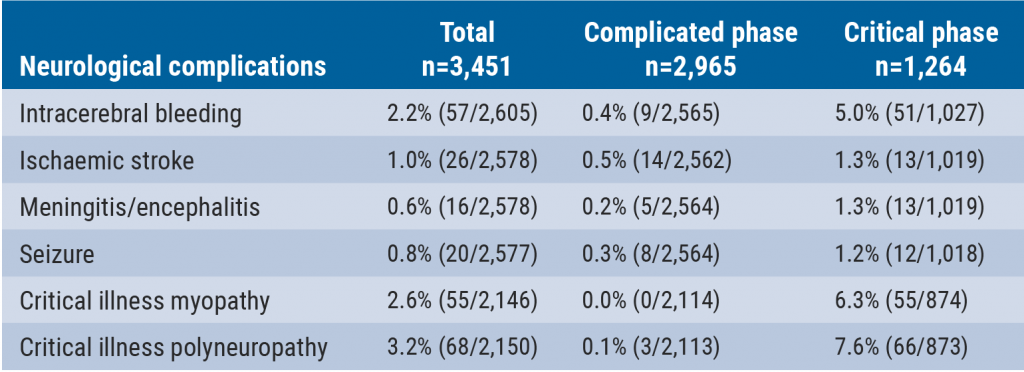"Available resources need to be cautiously redistributed during the peak of the pandemic," Dr. Thomas Pilgrim of Bern University Hospital, in Switzerland, told Reuters Health by email. "Depending on the burden of SARS-CoV-2 in the population and the available healthcare resources, deferring AVR in patients with severe aortic stenosis may do more harm than good."
In response to increased health care resource demands, many hospitals banned elective procedures at the beginning of the COVID-19 pandemic.
Dr. Pilgrim and colleagues in the Aortic Stenosis Defer study prospectively evaluated outcomes among patients with symptomatic severe aortic stenosis who received deferred versus expedited AVR based on prespecified criteria during the early stages of the COVID-19 pandemic.
The 25 patients with critical aortic stenosis - defined by aortic-valve area of 0.6 cm2 or less, transvalvular mean gradient of at least 60 mmHg, cardiac decompensation during the previous three months, or exercise intolerance on minimal exertion - were allocated to expedited AVR, whereas the 46 with an aortic-valve area between 0.6 cm2 and 1.0 cm2 and stable symptoms were allocated to deferred AVR.
After a mean follow-up of 31 days, nine patients (19.6%) in the deferred-treatment arm and only one patient (4.0%) in the expedited-treatment arm developed the primary composite endpoint of all-cause mortality, disabling and non-disabling stroke, and unplanned hospitalization for valve-related symptoms or worsening heart failure (log rank P=0.08), the researchers report in JAMA Network Open.
Significantly more patients allocated to deferred AVR than allocated to expedited ADR experienced the individual outcome of valve-related symptoms or worsening heart failure (19.6% vs. 0%, respectively).
Patients in the deferred-AVR group who required hospitalization for valve-related symptoms or worsening heart failure significantly more commonly had multivalvular disease (44.4% vs. 8.6).
Seven patients initially allocated to deferred AVR crossed over to expedited AVR as a result of valve-related symptoms or worsening heart failure.
"Our findings suggest that we should rather expedite AVR in patients with multivalvular disease, in which the concomitant presence of mitral regurgitation or mitral stenosis may result in underestimation of the severity of aortic stenosis," Dr. Pilgrim said.
In a related report, also in JAMA Network Open, Dr. Stamatios Lerakis and colleagues of Icahn School of Medicine at Mount Sinai, in New York City, describe the outcomes of 77 patients with symptomatic, severe aortic stenosis who underwent evaluation for transcatheter AVR (TAVR) before the beginning of the COVID-19 pandemic.
As a result of the pandemic, 22 patients had diagnostic testing or heart team appointments canceled because of COVID-19. During the first two months of the pandemic, 27 patients (35%) experienced a cardiac event and 24 patients underwent TAVR urgently for accelerating symptoms. Three patients died of severe aortic stenosis.
In the three months before the pandemic began, no patients died of aortic stenosis while awaiting TAVR.
Patients who experienced a cardiac event during the first two months of the pandemic were significantly more likely to have a history of cerebrovascular accident and New York Association class III and IV, compared with patients who did not experience a cardiac event.
Dr. Lerakis told Reuters Health by email, "Patients with severe aortic stenosis and low left ventricular ejection fraction, with more severe symptoms, with concomitant coronary-artery disease and history of stroke are at higher risk for adverse outcomes of death or need of emergent TAVR and should be placed ahead on the lists for TAVR and not wait on a regular list."
"These findings should be kept in mind by physicians taking care of these patients not only in case of another wave of this pandemic but also for care in normal times," he said.
Dr. Thoralf M. Sundt of Massachusetts General Hospital and Harvard Medical School, in Boston, who wrote a linked commentary, told Reuters Health by email, "The remarkably high mortality in NYC speaks to the importance even in the midst of a pandemic to continue providing critical procedures."
"We must continue to provide that care which we know is, in fact, life-saving," he said. And "we have to reassure patients and argue with administration/government to maintain access to urgent operating room and cath-lab cases."
Dr. Jasimuddin Ahamed of Oklahoma Medical Research Foundation, in Oklahoma City, who recently reviewed the risks of patients with severe aortic stenosis during the COVID-19 pandemic, told Reuters Health by email, "In cases where life-saving procedures like AVR are required, the SARS-CoV-2 infection can be an additional and very dangerous comorbidity."
"Major emphasis should be given to patients with symptomatic severe aortic stenosis who have multivalvular (mixed valve) disease and thus may particularly benefit from expedited AVR," said Dr. Ahamed. "They are more vulnerable for heart failure, and comorbidities could be higher if coinfected with SARS-VoV-2 virus."
"COVID-19 may pose an additional risk for many other life-saving procedures in which thromboembolic events are common, such as cardiac catheterization, implantation of pacemakers and left ventricular assist devices in heart failure patients, or thrombus removal in stroke patients," Dr. Ahamed said. "Thus, caution should be taken if these procedures are deemed necessary; in particular, thrombosis and the effects of anticoagulants on bleeding must be carefully monitored."
By Will Boggs MD
SOURCE: https://bit.ly/2GuTHDZ, https://bit.ly/2SqTZOD and https://bit.ly/2SsSeAp JAMA Network Open, online September 30, 2020.
Posted on
Previous Article
« Quality of life appears to suffer little when adding radiation to androgen deprivation for prostate cancer Next Article
Solriamfetol effective for treating excessive daytime sleepiness »
« Quality of life appears to suffer little when adding radiation to androgen deprivation for prostate cancer Next Article
Solriamfetol effective for treating excessive daytime sleepiness »
Related Articles
November 2, 2020
Mental health during the COVID-19 pandemic

© 2024 Medicom Medical Publishers. All rights reserved. Terms and Conditions | Privacy Policy

